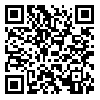BibTeX | RIS | EndNote | Medlars | ProCite | Reference Manager | RefWorks
Send citation to:
URL: http://jdc.tums.ac.ir/article-1-69-en.html
Background and aim: Saffron possesses a lot of medical applications in traditional medicine. One of its properties is ultraviolet (UV) light absorption. The aim of this study was preparation, determination of properties and investigating sun protevtive effects of nanoliposomes containing saffron extract and safranal, a substance existing in saffron.
Methods: Nanoliposomal hydroalcoholic extract of saffron stigma in concentrations 2%, 4%, 8% and nanoliposomal safranal in concentrations 0.25% , 0.5% and 1% were prepared. Standard lotion of homosalate 8% was used according to FDA standards for sun protection factor (SPF) determination and assessment of accuracy of the method. SPFs of substances were calculated in vitro by diluted solvent method using Mansur, et al equation and absorptiometry.
Results: SPf of Nanoliposomal saffron 8% extract was significantly higher than standard sunscreen homosalate with similar concentration. SPFs of safranal (1% and 0.5%) component of saffron were significantly higher than the standard sunscreen homosalate 8%.
Conclusion: Saffron can act as a sunscreen. Safranal existing in saffron is much more sun protective than standard substance, homosalate 8%. Thus , the safranal existing in saffron may have significant sun protective effect in low concentration if encapsulated in liposome.
Received: 2009/11/24 | Accepted: 2009/12/15 | Published: 2013/07/16
| Rights and permissions | |
 |
This work is licensed under a Creative Commons Attribution-NonCommercial 4.0 International License. |





